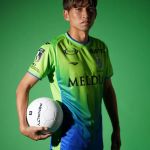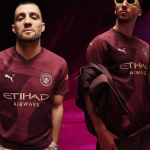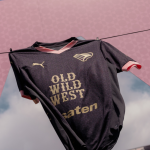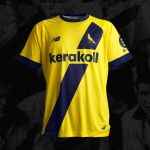
The best kits of the J League 2024
Homeland of sponsors, long sleeves, and unique patterns
January 25th, 2024
The new season of the J1 League, the top Japanese football division, is set to begin on February 23, 2024. In a revamped format featuring 20 teams (up from the 18 that competed during the 2023 season), the opening match will see Sanfrecce Hiroshima and Urawa Reds face each other, kicking off the first of the 38 scheduled matchdays. Despite Urawa Reds' unsuccessful Club World Cup campaign, the team's mere participation in the competition from Saitama signifies a moment of growth for Japanese football. In fact, to qualify for the Club World Cup, Urawa Reds had to triumph over Al-Hilal in the final of the AFC Champions League. Additionally, the upcoming season will be one of the last before the introduction of a new format. Starting from 2026, the J1 League will adopt an innovative format: the season will kick off in August, taking a break during the months of December, January, and February, with the final matches being played in May.
While the J1 League continues to evolve in terms of organization and prestige, the same can be said for its aesthetic appeal. The 2023 season, recently concluded with Vissel Kobe clinching the trophy, highlighted the Japanese top division as a true celebration of long-sleeved jerseys, increasingly rare in contemporary football. Alongside long-sleeved shirts are many unique patterns, serving as an infallible way for clubs to tell their own story and tradition.
Let's explore the best uniforms of the J1 League.
Júbilo Iwata - Admiral
It is undeniable that Júbilo Iwata is one of the most unique teams in the J1 League; consider the fact that, despite playing its matches at the Yamaha Stadium, it plays its showcase games at the larger Ecopa Stadium. Equally interesting as this peculiarity are the game jerseys presented for the new season. Manufactured by Admiral, they stand out for the checkered collar and sleeve edges. In this case, Admiral has made an interesting choice, focusing its creativity on areas of the shirts that often go unnoticed. Only the most observant may recall how the English brand has a history of working elegantly on the collar, as seen in the shirt worn by Tottenham from 1977 to 1980.
Kawasaki Frontale - PUMA
Kawasaki Frontale is a team that has tried to make a mark on the recent history of the Japanese top league, especially on the international stage. In 2007, it became the first Japanese club to advance past the group stage of the AFC Champions League. Aside from the small satisfaction of winning the Japanese Super Cup in 2021, the team led by Toru Oniki since 2017 has not won further trophies. However, from the perspective of jerseys, at least for this season, the club could stand out undisturbed. The home shirt exudes Gucci vibes thanks to the embellished green, red, and blue edges of the sleeves, which coincidentally are the symbolic colors of the city of Kawasaki; even the all-over pattern that embellishes the jersey recalls the Italian brand.
Shonan Bellmare - Penalty
The history of Shonan Bellmare is closely linked to European football, thanks to the legendary figure of Hidetoshi Nakata, who, after playing for the Japanese club from 1995 to 1998, could not resist the charm of Serie A, playing for Perugia, Parma, Bologna, and Fiorentina. This season, Shonan Bellmare has, as usual, opted for the presentation of a particularly eye-catching home kit. Blue and green shades, the club's social colors, alternate on the front, recalling the colors of Sagami Bay. Since 2012, the shirt features the Brazilian sponsor Penalty.
Tokyo Verdy - Athleta
Abundance of sponsors and a set of three arrow-shaped stripes adorn the home jersey of Tokyo Verdy, presented in a long-sleeve version. Among other noteworthy details of the jersey are the collar and cuffs, both in a gold color. Will this shirt be the good luck charm for Tokyo Verdy, a newly promoted club from the second tier, an institution in Japanese football if we refer to its birth as the football section of Yomuri Shinbun, the world's most circulated newspaper.
Yokohama Marinos - adidas
When we associate Japan with blue, images of the most iconic kits of the National Team of the Rising Sun come to mind, created by adidas and Asics since 1992, following the period from 1989 to 1991 when the national color was red. The club Yokohama Marinos is the one that plays with the jersey most similar to that of the National Team, which this year will feature, as in the case of Júbilo Iwata, a collar and sleeve edges distinguished by a very peculiar pattern. Another curiosity of the home jersey is that it boasts the Nissan sponsor in the central area, with which the club has a significant connection, considering that it originated as the football section of the automotive company.












